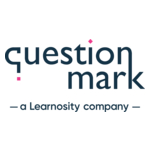DUBLIN--(BUSINESS WIRE)--The "Laboratory Information System Global Market Report 2020-30: COVID-19 Growth and Change" report has been added to ResearchAndMarkets.com's offering.
Where is the largest and fastest growing market for the laboratory information system? How does the market relate to the overall economy, demography and other similar markets? What forces will shape the market going forward? This report answers all these questions and many more.
The global laboratory information system market is expected to decline from $1.62 billion in 2019 to $1.58 billion in 2020 at a compound annual growth rate (CAGR) of -2.42%. The decline is mainly due to the COVID-19 outbreak that has led to restrictive containment measures involving social distancing, remote working, and the closure of industries and other commercial activities. The entire supply chain has been disrupted, impacting the market negatively. The market is then expected to recover and reach $2.33 billion in 2023 at a CAGR of 13.8%.
- North America was the largest region for the laboratory information system market in 2019. Asia-Pacific is expected to be the fastest-growing region in the forecast period.
- Major players in the laboratory information system market are Cerner Corporation, McKesson Corporation, Epic Corporation Inc, Medical Information Technology Inc, SCC Soft Computer, Sunquest Information Systems Inc, CompuGroup Medical AG, Computer Programs and Systems Inc, Merge Healthcare Inc, and Orchard Software Corporation.
The rising demand for lab automation is a major factor driving the growth of the laboratory information system market. A growing number of people are undergoing a series of tests, which in turn, increases the burden on the laboratories. The clinical laboratories are hiring more healthcare personnel to reduce the amount of workload on existing staff and minimize the number of errors associated with it in order to increase the efficiency and efficacy of the lab's functioning for accurate results. According to the Bureau of Labour Statistics, around 12,000 additional clinical laboratory professionals are required every year to meet the demand; however, only half of the number is entering the field. Thus, laboratories opt for automation to ease the work. For instance, TriCore Reference Laboratories in Albuquerque, Mexico, introduced automation in its 20% of instrumentation, which performs almost 80% of the lab's samples and displays helping the lab in managing and optimizing its functions for faster and accurate results.
A cloud-based laboratory information system is expected to become the leading trend in the laboratory information systems market. Cloud computing is associated with the sharing of computer resources and services including storage and servers over the internet for a reduced cost, increased speed, productivity, and security of the system in the network. The cloud system in laboratory information systems offers various advantages such as cost-efficiency, better results, and progress without space constrain. For instance, APEX laboratory information system by Apex HealthWare, LLC, Arxspan Laboratory Software by Bruker Software Solutions, Orchard laboratory information system by Orchard Software Corporation are cloud-based systems, which improve efficiency, reduces errors, and enhance patient care. Thus, a cloud-based laboratory information system is expected to gain significant traction in the laboratory information system market.
High costs associated with implementing and maintenance of laboratory information systems are anticipated to limit the growth of the laboratory information system market. The cost of a laboratory information system ranges from $4,000 and $100,000 and also an additional annual operating cost of $1000 to $5000. The operating costs comprise cost related to the software license, training the healthcare personal, maintenance, and service cost. The laboratories may opt for the lower-cost version owing to the high cost of software even when the requirement is for a higher-cost version to reduce the burden of the laboratories, causing an operational instability. Therefore, the high cost of a laboratory information system is expected to hinder the market.
Report Scope
The report covers market characteristics, size and growth, segmentation, regional and country breakdowns, competitive landscape, market shares, trends and strategies for this market. It traces the market's historic and forecast market growth by geography. It places the market within the context of the wider laboratory information system market, and compares it with other markets.
- The market characteristics section of the report defines and explains the market.
- The market size section gives the market size ($b) covering both the historic growth of the market, the influence of the COVID-19 virus and forecasting its growth.
- Market segmentations break down market into sub markets.
- The regional and country breakdowns section gives an analysis of the market in each geography and the size of the market by geography and compares their historic and forecast growth. It covers the growth trajectory of COVID-19 for all regions, key developed countries and major emerging markets.
- Competitive landscape gives a description of the competitive nature of the market, market shares, and a description of the leading companies. Key financial deals which have shaped the market in recent years are identified.
- The trends and strategies section analyses the shape of the market as it emerges from the crisis and suggests how companies can grow as the market recovers.
- The laboratory information system market section of the report gives context. It compares the laboratory information system market with other segments of the laboratory information system market by size and growth, historic and forecast. It analyses GDP proportion, expenditure per capita, laboratory information system indicators comparison.
Key Topics Covered
1. Executive Summary
2. Laboratory Information System Market Characteristics
3. Laboratory Information System Market Size And Growth
3.1. Global Laboratory Information System Historic Market, 2015 - 2019, $ Billion
3.1.1. Drivers Of The Market
3.1.2. Restraints On The Market
3.2. Global Laboratory Information System Forecast Market, 2019 - 2023F, 2025F, 2030F, $ Billion
3.2.1. Drivers Of The Market
3.2.2. Restraints On the Market
4. Laboratory Information System Market Segmentation
4.1. Global Laboratory Information System Market, Segmentation By Product, Historic and Forecast, 2015-2019, 2023F, 2025F, 2030F, $ Billion
- Standalone LIS
- Integrated LIS
4.2. Global Laboratory Information System Market, Segmentation By End User, Historic and Forecast, 2015-2019, 2023F, 2025F, 2030F, $ Billion
- Hospital Laboratories
- Independent Laboratories
- Physician Office Laboratories
- Others
5. Laboratory Information System Market Regional And Country Analysis
5.1. Global Laboratory Information System Market, Split By Region, Historic and Forecast, 2015-2019, 2023F, 2025F, 2030F, $ Billion
5.2. Global Laboratory Information System Market, Split By Country, Historic and Forecast, 2015-2019, 2023F, 2025F, 2030F, $ Billion
Companies Mentioned (A-Z)
- Abbott Laboratories
- Cerner Corporation
- CompuGroup Medical AG
- Computer Programs and Systems Inc.
- Epic Corporation Inc.
- LabWare
- LigoLab LLC
- McKesson Corporation
- Medical Information Technology Inc.
- Merge Healthcare Inc.
- Orchard Software Corporation
- SCC Soft computer
- Sunquest Information Systems Inc.
- Thermo Fisher Scientific
For more information about this report visit https://www.researchandmarkets.com/r/wfuvf4.
Contacts
ResearchAndMarkets.com
Laura Wood, Senior Press Manager
press@researchandmarkets.com
For E.S.T. Office Hours Call 1-917-300-0470
For U.S./CAN Toll Free Call 1-800-526-8630
For GMT Office Hours Call +353-1-416-8900












